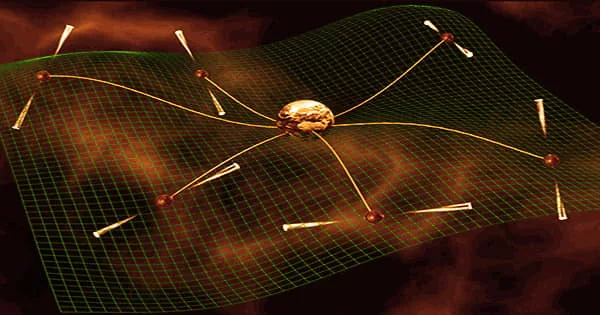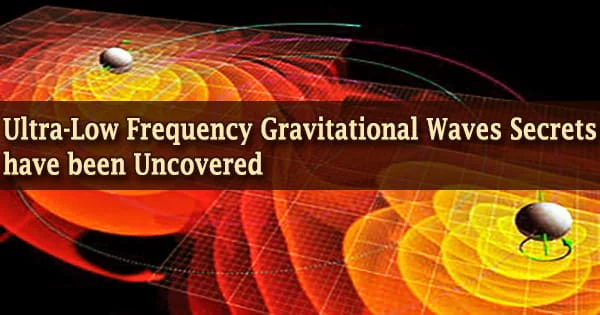According to researchers at the University of Birmingham, new ways of detecting ultra-low frequency gravitational waves can be paired with existing, less sensitive data to provide new insights into the early evolution of our universe.
Gravitational waves are ripples in Einstein’s spacetime fabric that travel at the speed of light throughout the cosmos. They have a wide range of wavelengths or frequencies. Gravitational waves are ripples in the ordinarily robust, stiff fabric of spacetime caused by the universe’s most destructive occurrences, such as exploding stars, colliding ultra-dense neutron stars, and merging black holes.
The majority of gravitational waves discovered so far have been in the millihertz range. Low-frequency gravitational waves, which occur at nanohertz frequencies, are, on the other hand, far more difficult to detect. Scientists have yet to detect gravitational waves at ultra-low ‘nanohertz’ frequencies, but new technologies are being tested now and should confirm the first low-frequency signals shortly.
The first tentative hints of a gravitational wave signal using pulsar timing arrays might recently have been seen by NANOGrav and we expect the next few years to be a golden age for this type of science.
Dr. Christopher Moore
The major approach involves utilizing radio telescopes to detect gravitational waves using pulsars, which are unusual, dead stars that emit radio waves in extremely regular pulses. Pulsars, for example, are used by researchers at the NANOGrav project to timing the rotation times of a network, or array, of millisecond pulsars, astronomers’ best estimate of a network of perfect clocks dispersed throughout our galaxy. These may be used to calculate the fractional changes induced by gravitational waves as they propagate through space.

The source of these signals, on the other hand, has yet to be discovered. Scientists at the University of Birmingham’s Institute for Gravitational Wave Astronomy suggest that deciding on a solution solely based on data from pulsar timing arrays (PTAs) will be exceedingly challenging.
Instead, they argue in a letter published today (18th October 2021) in Nature Astronomy that combining this new data with observations from other projects, such as the European Space Agency’s Gaia mission, will help disentangle and interpret the various signals still lingering from the early stages of our universe.
Low-frequency gravitational waves are created by the merging of supermassive black holes, which may be millions or billions of times the mass of the Sun. High-frequency gravitational waves are caused by regular stars or smaller black holes between 20 and 30 solar masses.
The most popular explanation for ultra-low frequency gravitational waves is that they are created by a population of supermassive black holes at the merging galaxies’ centers. As galaxies merge, their central black holes create binaries, which generate gravitational waves. In this situation, detecting gravitational waves with PTA would open up fascinating new avenues for studying the astrophysics of galaxy formation and development.
There are, however, alternative options. Nanohertz gravity waves have the potential to reveal the origins of our universe, far before galaxies and black holes appear. In fact, it’s been postulated that extremely low-frequency gravitational-wave signals may be created by other processes early after the big bang, such as if the Universe went through a phase transition at the right temperature, as physicists call it.
Lead author, Dr. Christopher Moore, said: “The first tentative hints of a gravitational wave signal using pulsar timing arrays might recently have been seen by NANOGrav and we expect the next few years to be a golden age for this type of science. The variety of explanations for these signals is exciting, but also a maze. We need a way to tell the different possible sources apart from each other. Currently, this is extremely difficult to do with pulsar timing array data alone.”
Co-author Professor Alberto Vecchio said: “Pulsar timing arrays may offer unprecedented insights into ancient cosmological processes. Developing the sophisticated methods to interpret these insights will mean we can truly begin to understand how our universe was formed and took shape.”





